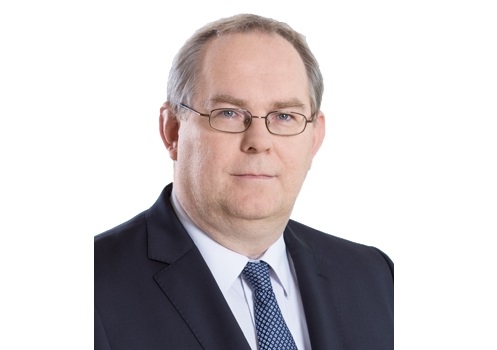More rational behaviour was evident across the reinsurance industry at the mid-year renewals and it’s expected that reinsurance prices and conditions will continue to improve through 2019 and into 2020, according to member of Hannover Re’s executive board, Sven Althoff.
 In an interview with Reinsurance News, Sven Althoff discussed the response of the industry to the improved rate environment following consecutive years of heavy catastrophe losses and a muted rate response in 2018.
In an interview with Reinsurance News, Sven Althoff discussed the response of the industry to the improved rate environment following consecutive years of heavy catastrophe losses and a muted rate response in 2018.
“In my view, the renewals in June and July saw a more rational behaviour in the market from both sides, from traditional reinsurance capital and from providers of alternative capital as well. In addition, we are observing a good positive momentum for rate increases on the insurance side, which is broader in scope from both a territorial and products perspective compared to the reinsurance market.
“Therefore, I would expect that reinsurance prices and conditions would continue to improve through the remainder of 2019 and well into 2020,” said Althoff.
Rate improvements throughout 2018 and also at the start of 2019 were described by many market participants as disappointing, and while price momentum improved at the mid-year renewals, this was notably in loss-affected lines and geographies.
However, through the remainder of 2019 and well into 2020, Althoff explained that he would expect the continued improvement of reinsurance prices and conditions to “happen on a wider scale” than what’s been seen over the past years, where the majority of price-reaction was limited to loss-affected business.
In light of the muted rate response following the events of 2017 and 2018, which was in part driven by the continued entry of alternative reinsurance capital and subsequent intense competition, the traditional reinsurance cycle has often been at the forefront of discussions.
Historically, in the aftermath of large loss events reinsurance prices would spike meaningfully as the market hardened. However, with ample capacity available both in the market and sat on the sidelines waiting to come in (most notably alternative capital), the traditional market cycle appears to have been disrupted.
“The world is changing and so is the cyclicality of reinsurance. Still, we will always operate in some sort of cycle. As long as interest rates are ultralow or even negative, there will be ample capital competing for returns. No matter whether you look at real estate markets, stock markets or the reinsurance industry: the hunt for yield weighs on everybody’s returns. But we all operate as business enterprises and the industry cannot operate at return on equity margins which are below shareholders’ expectations over an extended period. Therefore, we will continue to see traditional cycles.
“The last observed hard market phases were less pronounced and shorter in duration than in previous hard markets. In order to be successful as a reinsurer, you therefore have to work on your competitive position and create advantages which allow you to outperform the industry across the cycle,” explained Althoff.
Today, reinsurers of all shapes and sizes are striving for greater efficiency and increased profitability in order to remain relevant in a rapidly evolving risk landscape. Hannover Re is one of the largest reinsurers in the world, and Althoff explained how the firm’s size is a benefit in the current climate.
“Size matters more than before as clients are either reducing reinsurance panels or looking for highly tailored agreements. For us, being among the larger reinsurers also means we have more options for diversification. The global footprint helps to meet the requirements of clients with an international presence.
“Our size also enables us to handle more complex, bespoke solutions in the property and casualty reinsurance space as well as in life and health reinsurance. In order to be effective, capital relief solutions for our clients are very often bulky in terms of ceded premium and this is an area of business, which for the most part is only written by the larger reinsurers,” he said.
Althoff has been a member of Hannover Re’s executive board since 2014, and his responsibilities include property and casualty reinsurance in Australasia as well as marine, aviation, credit, surety and political risks. He is also responsible for property and casualty business in the UK, Ireland and the London market, as well as facultative reinsurance and coordination of the reinsurer’s property and casualty business.
Looking forward to the remainder of 2019 and into 2020, Althoff explained that currently, the property and casualty reinsurance space has regained some ground from both an underwriting and pricing perspective.
“While that helps reinsurers to continue writing the existing business at somewhat improved conditions, margins are still not justifying a significant expansion for us and we are expecting further gradual improvements in trading conditions for both insurers and reinsurers,” said Althoff.


